Behind-the-Scenes of "Discovering Teen Rex"
An Exclusive Sit-Down Interview with Dr. Tyler Lyson
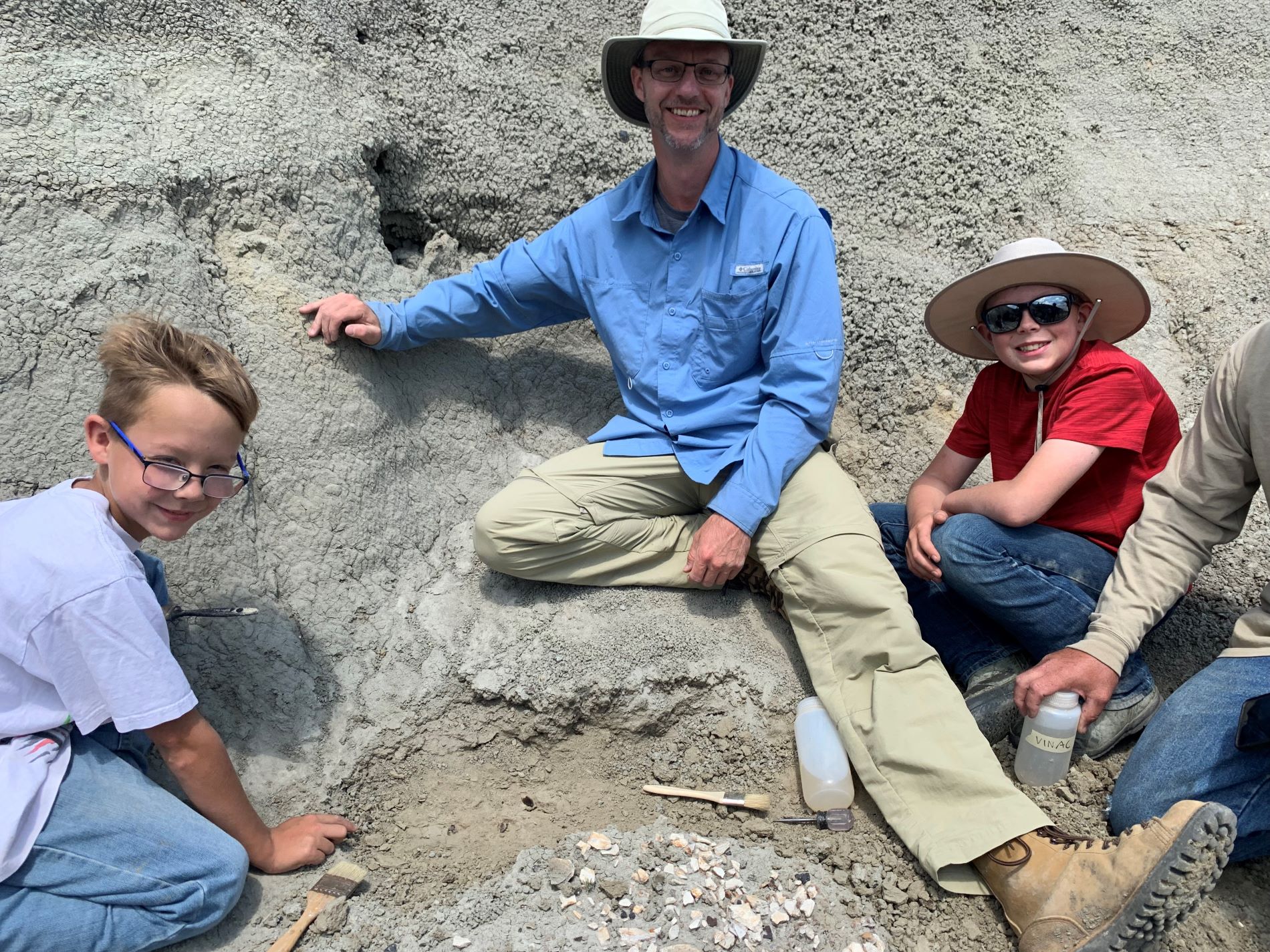
The Denver Museum of Nature & Science is abuzz with an exciting new addition — the rare fossil of a teenage Tyrannosaurus rex, affectionately nicknamed "Teen Rex." Discovered by two young brothers, their cousin and their father in the Badlands of North Dakota, this remarkable find represents one of only a handful of adolescent T. rex specimens known worldwide.
Read more: Teen Rex Discovery Roars into the Denver Museum of Nature & Science
In this exclusive sit-down interview with the leading Denver Museum of Nature & Science Paleontologist Dr. Tyler Lyson, we delve into the incredible story behind how the Teen Rex discovery came to be, including Dr. Lyson's experiences as a young man digging for fossils in North Dakota.
This is what we asked him:
How did you first get interested in fossil collecting and paleontology growing up?
TYLER LYSON: Growing up in the small town of Marmarth, North Dakota, right in the middle of the fossil-rich Hell Creek formation, really sparked my interest from a young age. My uncle would take my brothers, my cousins and me into the Badlands to run around and look for fossils. I found my first dinosaur bone, the upper jaw of a duckbill, when I was eight or so. Professional "bone diggers" would come to the area to collect fossils and some of them would take me out with them and taught me more about it. I started working for various “bone diggers” as a summer job starting in sixth grade. That summer, I found some incredible localities with several dinosaur skeletons including a duckbilled dinosaur with skin impressions. I also found an articulated Thescelosaurus skeleton, as well as a graveyard of fossilized turtles that I named the "Turtle Graveyard." I was incredibly lucky to live near the fossil-rich Badlands and to have family who let me collect fossils on their property. Since getting my first job in paleontology, I’ve never looked back!
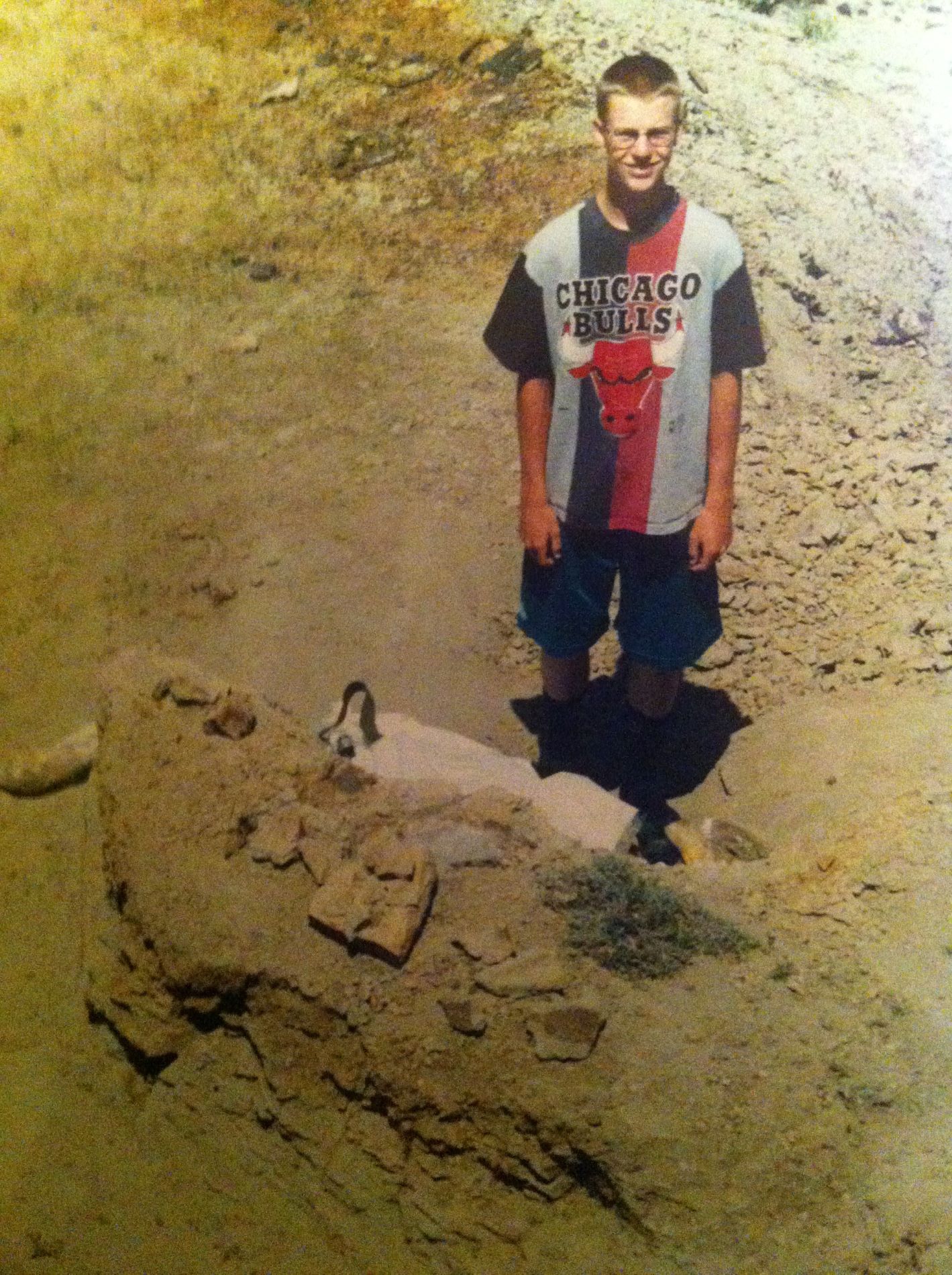
Thirteen-year-old Dr. Tyler Lyson poses in front of one of his early discoveries in the Hell Creek Badlands in 1996. (Photo/Molly Lyson)
The "Teen Rex" T. rex fossil was first discovered by young kids exploring the area where you grew up. Can you tell me more about your involvement in that exciting find?
TL: Yes, it was a remarkable discovery by brothers Jessin and Liam Fisher, their dad Sam Fisher and their cousin Kaiden Madsen. The whole story reminds me of my childhood, roaming the Badlands with my brothers and cousins and finding various fossils. And what a discovery they made! When I got the text and photos from Sam, I could tell right away from the photos that they’d found a large dinosaur that appeared to be partially articulated. Based on the photos, I thought they’d found a duckbilled dinosaur, which is the second most common dinosaur in the Hell Creek Formation. Luckily, the fossil was discovered on public lands managed by the Bureau of Land Management. This meant that an excavation permit was needed and that the fossils were required to go to a federal repository, such as the Denver Museum of Nature & Science, where they would be held in trust for the American people in perpetuity. After obtaining the permit, my team and I were finally ready to start excavating the boys’ discovery. Once we got out to the site, we quickly realized within the first few hours of the excavation that it was an incredibly rare teenage Tyrannosaurus rex fossil.
It just goes to show that you never know what amazing fossils could be out there waiting to be discovered, especially by young explorers who have a passion and keen eye for spotting them in the field. Experiences like that can spark a lifelong enthusiasm for science.
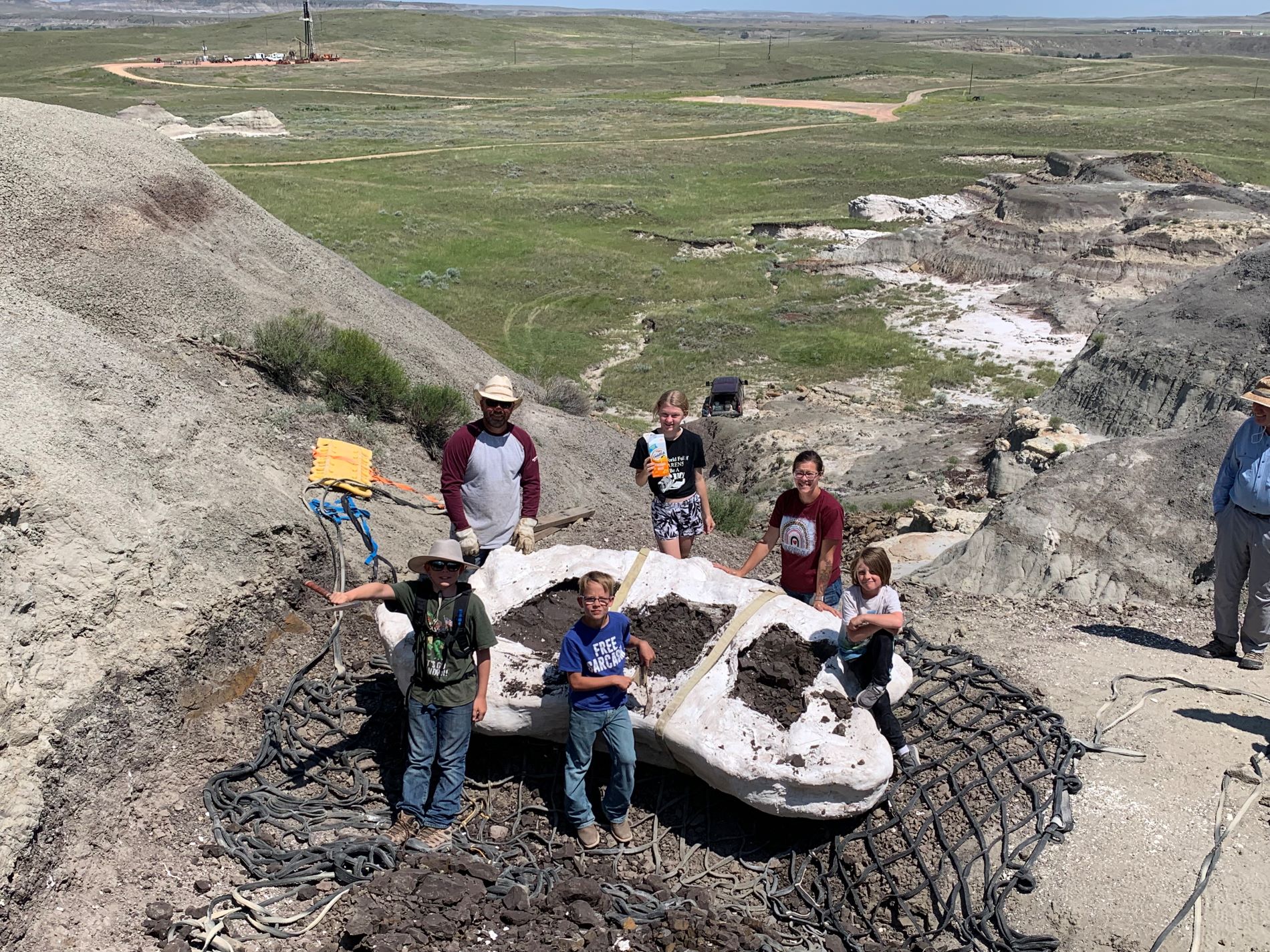
The fossil-finding Fisher family, clockwise from upper left, Sam Fisher, Emalynn Fisher, Danielle Fisher, Liam Fisher, Kaiden Madsen and Jessin Fisher, pose with the field jacket after it was rolled into a helicopter net in Hell Creek Badlands in July, 2023. (Photo/Dr. Tyler Lyson)
How was the Teen Rex fossil excavated from its discovery site and brought to the Museum?
TL: For 11 days, my team and I removed the overlying rock using picks, shovels and a 70-pound jackhammer. The partial skeleton was buried along a sand bar in an ancient river and we used awls and brushes to carefully outline the extent of the bone pile. We wrapped the fossils encased in sandstone in burlap soaked in plaster and rolled the 6,000-pound field jacket into a helicopter net. Given the size of the block, we hired a Black Hawk helicopter to lift the field jacket off the hill and onto a nearby trailer. The fossil was then transported on a heavy-duty trailer from the Badlands of North Dakota to the Denver Museum of Nature & Science.
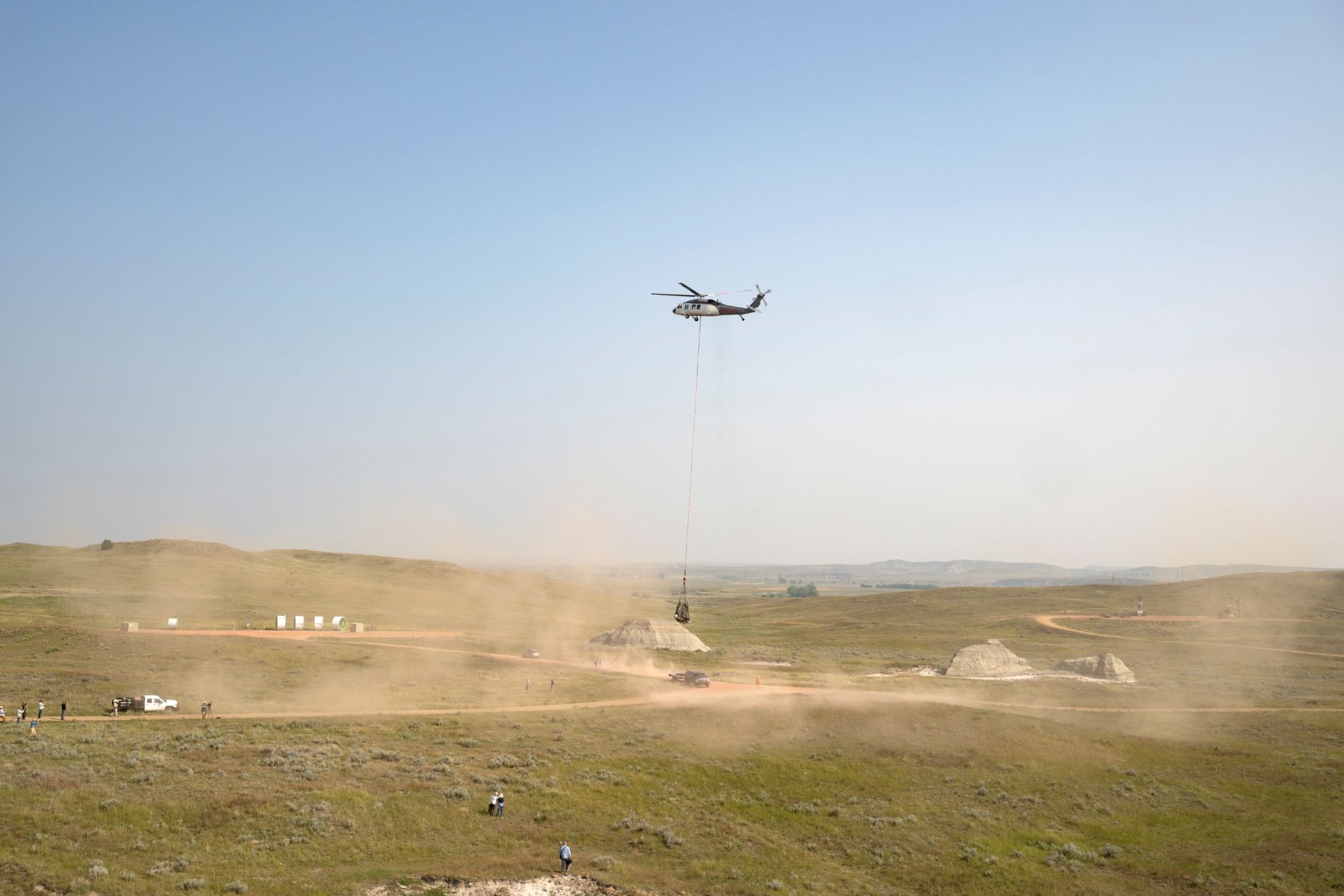
A Black Hawk helicopter places the roughly 6,000-pound field jacket carrying the T. rex fossil onto a trailer near Marmarth, North Dakota in July, 2023. (Photo/ Rick Wicker)
How were you able to determine that the fossil belonged to a teenage T. rex?
TL: To determine that this fossil belonged to a juvenile T. rex, we compared the size of the lower leg bone, the tibia, to the tibias of other full-grown T. rex specimens. The tibia is much smaller in size compared to an adult rex. We placed the size of the tibia into a published tyrannosaur growth curve, which indicated the specimen was from a subadult, teenage-aged individual that had not yet reached maximum size.
It’s important to note that using size is not the best way to determine the age of an animal. The most rigorous method to determine age is to perform histological analyses of the limb bones to look for lines of arrested growth — similar to tree rings. For the next several months, we will analyze the histology of the lower limb bones to provide a much more rigorous age estimate.
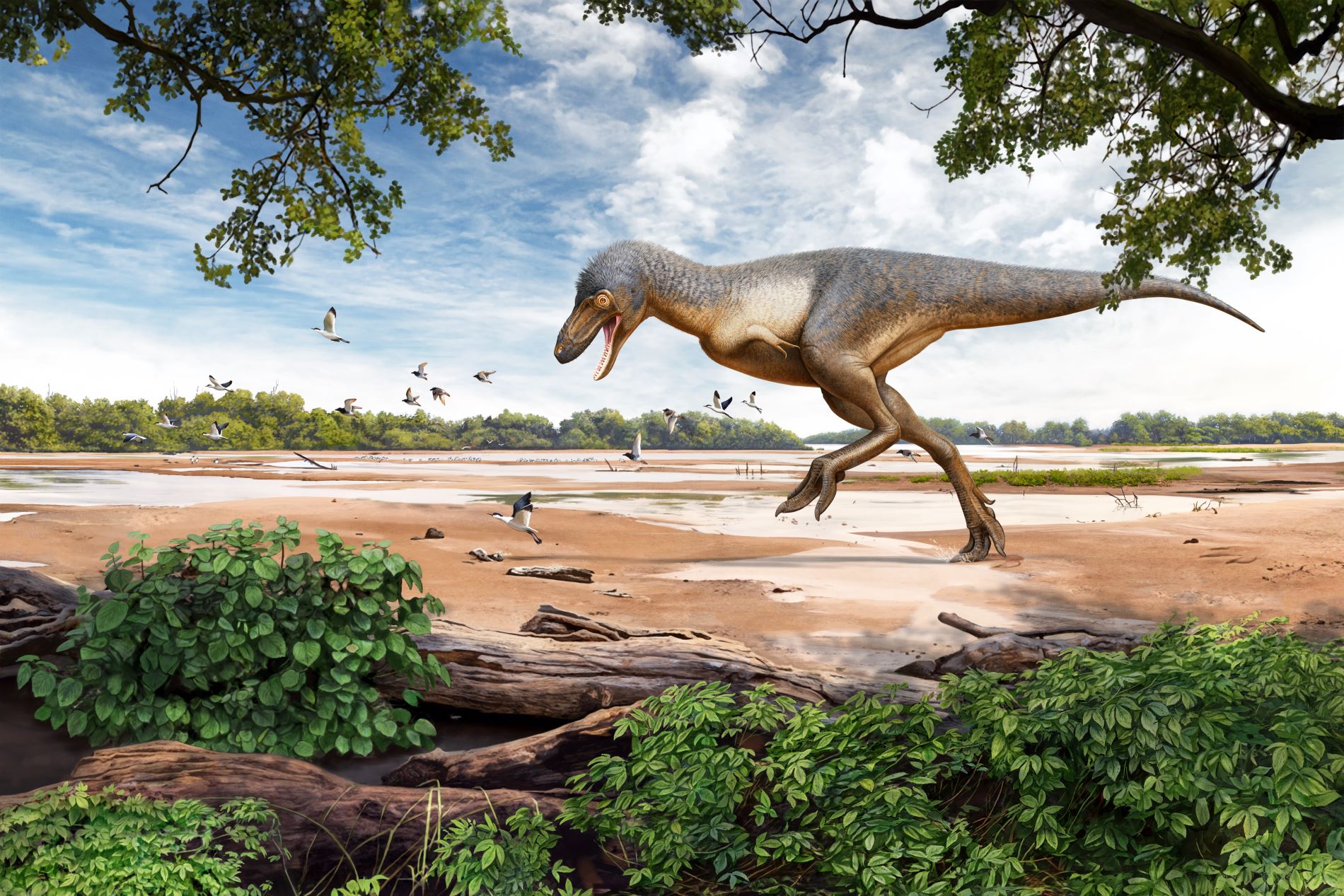
A reconstructed juvenile Tyrannosaurus rex traverses land in North Dakota some 67 million years ago. (Photo/ Andrey Atuchin and Denver Museum of Nature & Science)
How big was the young T. rex dinosaur and how does that compare to an adult?
TL: Even though we determined this was a teenage T. rex and not fully grown, it was still a massive animal! The skeleton we found was about 25 feet long when it was alive 67 million years ago, which is like having two full-sized pickup trucks parked end-to-end. And it stood around 10 feet tall at the hip — as tall as a basketball hoop.
We estimated this young T. rex weighed around 3,500 pounds when it was alive. That's the equivalent of two big rhinos! So while not the largest size, it was still an enormously heavy and formidable predator.
To give you a sense of the size difference though, an adult T. rex could reach over 40 feet in length and weigh a staggering 8,000 pounds or more at maximum size. So, this teenager was considerably smaller, maybe around half the length and less than half the weight compared to a full-grown adult T. rex. Still, for a subadult, it was gargantuan. The fine growth details we'll study from the bones will provide key insights into this iconic dinosaur's development. How quickly did this animal grow from a chick-sized animal into an 8,000-pound apex predator and how did its skeleton change over time are just a few questions this specimen will help answer.
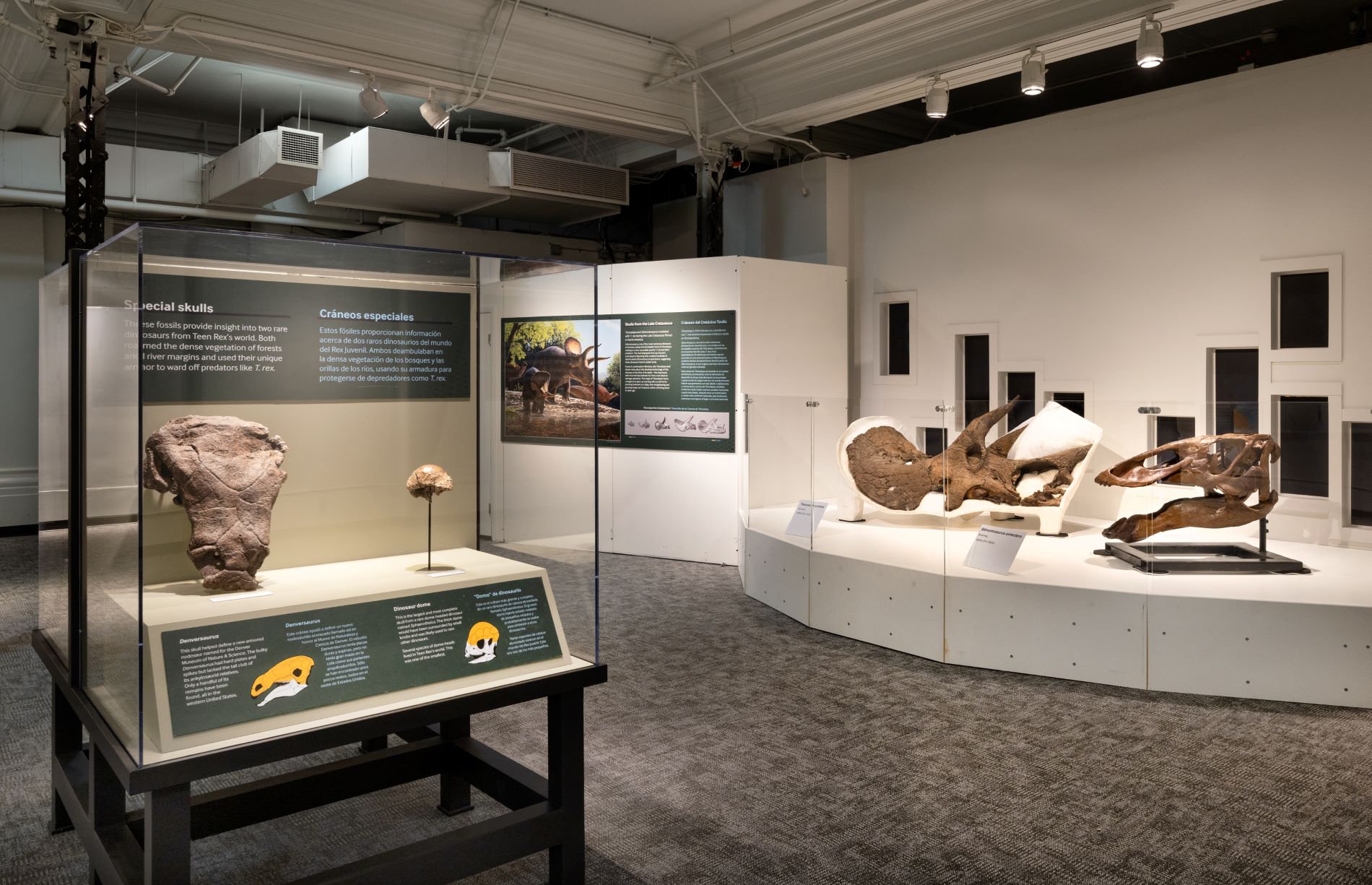
Dinosaur bones are displayed alongside the live fossil preparation lab in the "Discovering Teen Rex" experience at the Denver Museum of Nature & Science in May, 2024. (Photo/ Rick Wicker)
I understand there is also a documentary film about the discovery and excavation of the Teen Rex fossil. Can you tell us more about that?
TL: Yes, that's right! We're really excited that the discovery and excavation of this rare teenage T. rex fossil was captured on film by crews from Giant Screen Films. They were embedded with our team from the moment my team realized the fossil belonged to a juvenile T. rex all the way through extracting the fossil using a Black Hawk helicopter. It was incredible to have the film there to capture the raw excitement! Usually, these science documentaries are made after the fact and all of the excitement has to be recreated. This is what makes this documentary so special — all the excitement is real!
The result is an amazing documentary film called "T. REX" that provides a rare window into the real scientific process of a major paleontological excavation from discovery to our Museum. It premiers worldwide on June 21, including in the Denver Museum of Nature & Science’s giant screen Infinity Theater. We’re really excited for the public to be able to see the real-life T. rex fossil and then go to the theater and experience its discovery on the giant screen.
Get tickets to T. REX movie, here!
Is there anything else you would like to add?
TL: This discovery is truly an unprecedented opportunity to learn about the life cycle and growth of one of the most famous and incredible dinosaurs that ever lived.
Over the next year, visitors to the Denver Museum of Nature & Science will be able to watch as our fossil preparation lab works to uncover and clean this teenage T. rex skeleton right there on the Museum floor. It's a painstaking process, but seeing it happen firsthand gives people a window into the real scientific work of paleontology. Combined with the Giant Screen Film documentary “T. REX,” this is such a unique story and opportunity.
I can't wait to continue uncovering the secrets held in the bones of our teenage T. rex and share those discoveries with everyone. So, I hope everyone will come to experience this incredible story of science and discovery as it continues to unfold over the coming years!